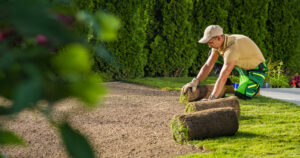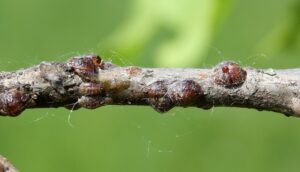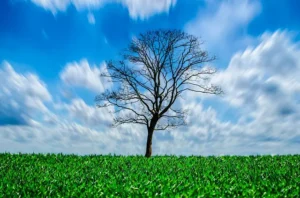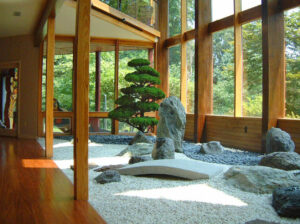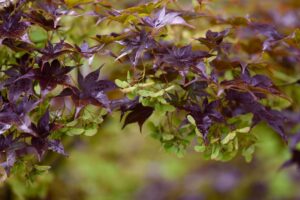The United States is home to a diverse range of tree species due to its varied climates and ecosystems. With over 1,000 species of trees, the country boasts a mix of coniferous and deciduous trees, each adapted to different environments ranging from tropical to temperate, and even arid climates. In this article, we will provide a detailed overview of the most common tree types in the United States, their specifications, distribution, and some interesting facts about each.
Types of Trees in the USA
There are thousands of tree species across the United States, but they can generally be grouped into several main categories based on characteristics such as leaf type, shape, and preferred environment. Below is a breakdown of the most common tree types, along with their estimated share in the U.S. tree population.
| Tree Type | % Share in the U.S. Tree Population | Common Species in the U.S. |
|---|---|---|
| Coniferous Trees | 36% | Pines, Spruces, Firs, Cedars |
| Deciduous Broadleaf Trees | 42% | Oaks, Maples, Elms, Birches |
| Tropical/Subtropical Trees | 12% | Palms, Mahogany, Mangroves |
| Evergreen Broadleaf Trees | 7% | Holly, Live Oak, Magnolias |
| Others (Shrubs, Small Trees) | 3% | Dogwood, Buckthorn, Sumacs |
Coniferous Trees
Coniferous trees, also known as evergreens, dominate large swathes of the U.S., particularly in the northern and western states. These trees are identifiable by their needle-like leaves and cones that carry seeds. Common species include pine, spruce, fir, and cedar.
Pine Trees
- Count: Approximately 30% of the total coniferous population.
- Description: Pines are among the most recognizable trees, known for their long, slender needles and cones. They are widely used in construction and as Christmas trees.
- Facts:
- Pines are the most abundant tree species in the U.S., with over 100 species.
- Ponderosa Pine is one of the tallest tree species in the U.S., reaching heights of over 200 feet.
Spruce Trees
- Count: 25% of coniferous trees.
- Description: Spruces have short, stiff needles and are native to cooler climates, particularly in the Pacific Northwest.
- Facts:
- The Sitka Spruce is the tallest species of spruce, growing up to 300 feet.
- Spruce wood is highly valued for making musical instruments.
Fir Trees
- Count: 20% of coniferous trees.
- Description: Firs are known for their soft, flat needles and upright cones. They are popular as Christmas trees due to their dense foliage and pleasant fragrance.
- Facts:
- The Douglas Fir is not a true fir but is one of the most economically important timber trees.
- Fir trees are common in the Rocky Mountains and the Pacific Coast.
Cedar Trees
- Count: 15% of coniferous trees.
- Description: Cedar trees have aromatic wood and are known for their durability. They are often used for outdoor construction, such as fences and decks.
- Facts:
- Cedar wood is naturally resistant to rot and insects.
- The Eastern Red Cedar is native to the eastern U.S. and is widely used in furniture making.
Deciduous Broadleaf Trees
Deciduous trees are characterized by their broad leaves that change color and fall off in the autumn. They are the most common tree type in the U.S., especially in the eastern forests. Common species include oak, maple, elm, and birch.
Oak Trees
- Count: 35% of the deciduous population.
- Description: Oaks are large, sturdy trees known for their strength and long lifespan. Their acorns serve as food for various wildlife species.
- Facts:
- The White Oak can live for up to 600 years.
- Oaks are a symbol of strength and are the national tree of the U.S.
Maple Trees
- Count: 20% of deciduous trees.
- Description: Maples are known for their brilliant fall foliage and sweet sap, which is used to make maple syrup.
- Facts:
- The Sugar Maple is the primary source of maple syrup in North America.
- Maples are the most vibrant trees during the fall, turning bright red, orange, and yellow.
Elm Trees
- Count: 15% of deciduous trees.
- Description: Elms are tall, graceful trees with vase-shaped crowns. They were once a dominant tree in American cities until Dutch elm disease decimated their populations.
- Facts:
- American Elm was once the most common street tree in the U.S.
- Elms are resistant to flood conditions and often grow near rivers.
Birch Trees
- Count: 10% of deciduous trees.
- Description: Birches are small to medium-sized trees known for their distinctive bark that peels off in thin layers.
- Facts:
- White Birch is known for its bright white bark, which stands out in forests.
- Birches are fast-growing trees but have relatively short lifespans.
Tropical/Subtropical Trees
Tropical and subtropical trees are primarily found in the southern regions of the U.S., particularly in Florida, Hawaii, and southern Texas. These trees thrive in warm, humid climates.
Palm Trees
- Count: 40% of tropical trees.
- Description: Palms are iconic for their tall, slender trunks and fan-like leaves. They are mostly found in tropical regions.
- Facts:
- The Sabal Palm is Florida’s state tree.
- Palm trees are not technically trees but a type of grass.
Mahogany Trees
- Count: 25% of tropical trees.
- Description: Mahogany trees produce some of the world’s most valuable hardwood, known for its rich color and durability.
- Facts:
- American Mahogany is prized for its use in high-end furniture and musical instruments.
- Mahogany trees are native to southern Florida and the Caribbean.
Mangroves
- Count: 15% of tropical trees.
- Description: Mangroves are found in coastal areas and are vital for protecting shorelines from erosion.
- Facts:
- Mangroves can tolerate saltwater, making them unique among tree species.
- They provide crucial habitats for marine life.
Evergreen Broadleaf Trees
Evergreen broadleaf trees retain their leaves year-round and are commonly found in the southeastern U.S., especially in states like Florida and Georgia.
Holly Trees
- Count: 40% of evergreen broadleaf trees.
- Description: Holly trees are known for their glossy green leaves and bright red berries. They are often used as decorative trees.
- Facts:
- The American Holly is often used for Christmas decorations.
- Holly berries are toxic to humans but provide food for birds.
Live Oak
- Count: 30% of evergreen broadleaf trees.
- Description: Live oaks are large, sprawling trees that are often found in the southeastern U.S. They are known for their strength and long lifespan.
- Facts:
- Live oaks are commonly draped in Spanish moss.
- Some live oaks can live for over 500 years.
Magnolia Trees
- Count: 20% of evergreen broadleaf trees.
- Description: Magnolias are large, fragrant trees that bloom with stunning white flowers.
- Facts:
- The Southern Magnolia is the state tree of Mississippi.
- Magnolias are some of the oldest trees, dating back millions of years.
Other (Shrubs, Small Trees)
This category includes smaller trees and shrubs that are common in residential areas and open woodlands.
Dogwood Trees
- Count: 40% of small tree population.
- Description: Dogwoods are known for their small size and showy white or pink flowers.
- Facts:
- The Flowering Dogwood is the state tree of Virginia.
- Dogwoods are popular ornamental trees.
Buckthorn
- Count: 30% of small tree population.
- Description: Buckthorns are small, hardy trees that thrive in a variety of conditions.
- Facts:
- Buckthorn is considered invasive in some parts of the U.S.
- It has medicinal properties and was historically used as a laxative.
Sumacs
- Count: 20% of small tree population.
- Description: Sumacs are small trees with bright red foliage in the fall. Some species produce clusters of red berries.
- Facts:
- Staghorn Sumac is known for its fuzzy red fruit, which can be used to make sumac lemonade.
- Sumac trees are drought-resistant.
Frequently Asked Questions (FAQs)
- How many tree species are there in the U.S.?
There are more than 1,000 tree species in the U.S., ranging from con
iferous evergreens to deciduous broadleaf trees.
- What is the most common tree type in the U.S.?
Deciduous broadleaf trees, such as oaks and maples, are the most common, making up around 42% of the U.S. tree population. - What is the largest tree species in the U.S.?
The Sequoia is the largest tree species in the U.S., with some reaching heights over 300 feet. - Which state has the most trees?
Alaska has the most trees, thanks to its vast boreal forests that cover millions of acres. - What is the most valuable tree species in the U.S.?
Mahogany and black walnut are among the most valuable tree species due to their high-quality wood. - Are all palm trees native to the U.S.?
No, most palm trees are not native to the U.S., though the Sabal Palm is native to the southeastern states. - What is the fastest-growing tree in the U.S.?
The Eastern Cottonwood is one of the fastest-growing trees in the U.S., growing up to 5 feet per year. - What trees are native to the U.S.?
Native trees include oaks, maples, pines, and the American Elm, among others. - Are cedar trees common in the U.S.?
Yes, cedar trees are common in the U.S., particularly in the western states and parts of the Appalachians. - How many types of oak trees are there in the U.S.?
There are more than 60 species of oak trees in the U.S. - Do maple trees grow in all U.S. states?
Maple trees grow in most U.S. states, particularly in the northeastern regions where they thrive in temperate climates. - Which U.S. tree produces the best timber?
Douglas Fir and White Oak are highly regarded for their timber, especially in construction and furniture making. - How are trees classified in the U.S.?
Trees are classified based on their leaf type (broadleaf vs. coniferous) and their growth habit (deciduous vs. evergreen). - What is the rarest tree species in the U.S.?
The Florida Yew and Torreya Taxifolia are among the rarest tree species, both of which are critically endangered. - Do all trees in the U.S. shed their leaves?
No, only deciduous trees shed their leaves annually. Evergreen trees, such as pines and spruces, keep their needles year-round.
Conclusion
The United States is home to a rich diversity of tree species, with each type playing a crucial role in the ecosystem. From towering conifers in the northern forests to tropical palms in the southern regions, the variety of tree types in the U.S. is truly staggering. These trees not only provide valuable resources, such as timber and food, but also contribute to the country’s natural beauty and biodiversity.
